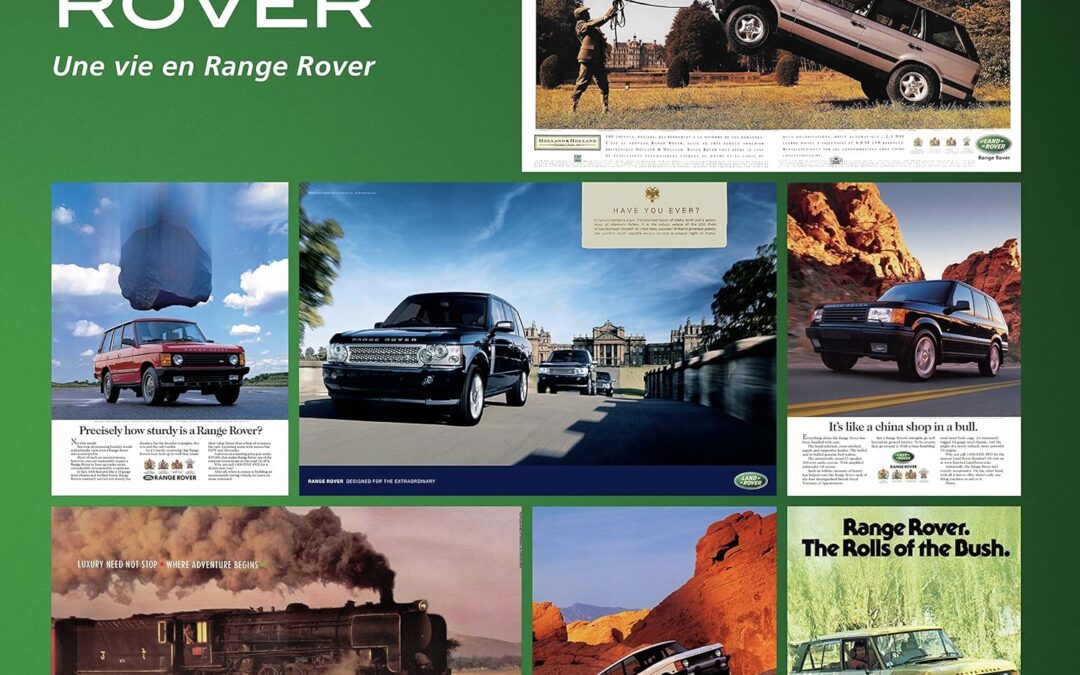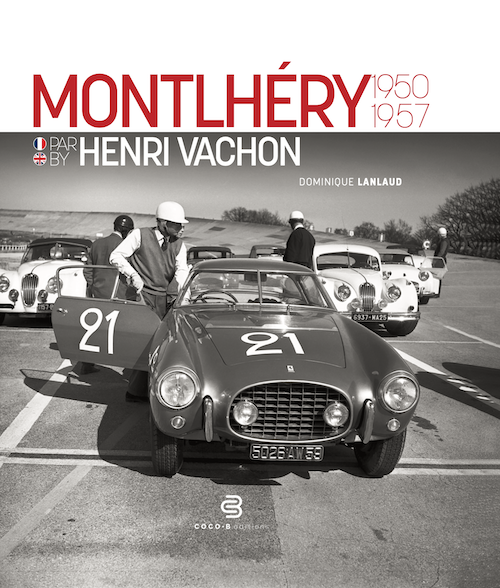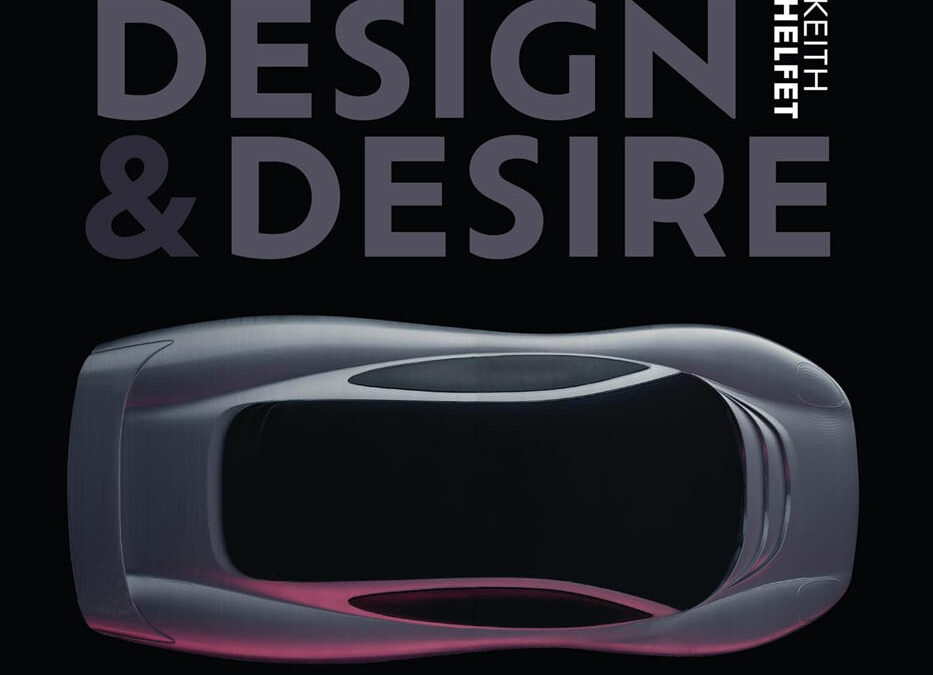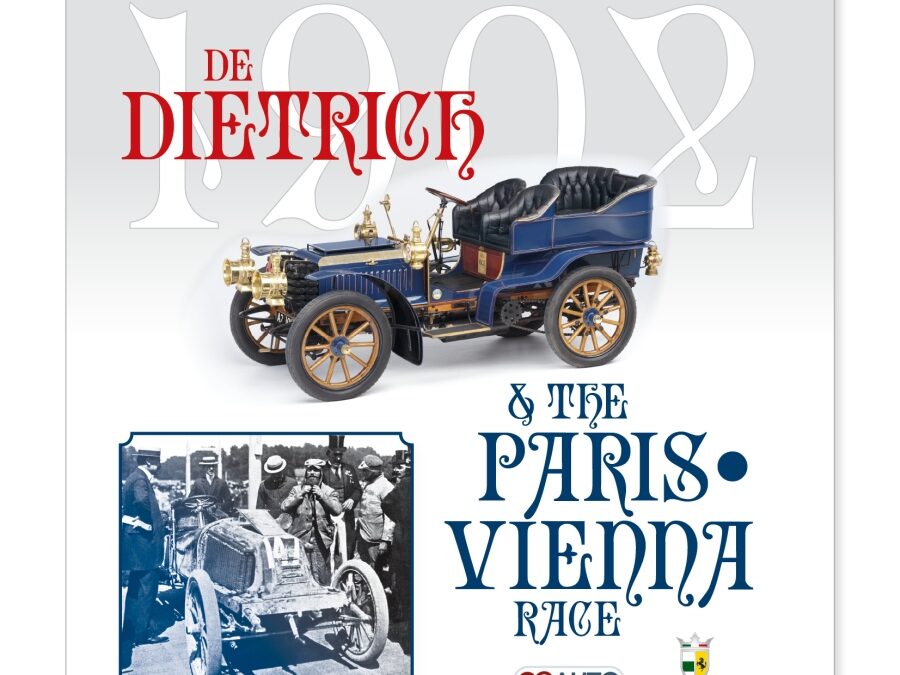
Rare & Unique Vehicles magazine, together with Metropole Druten is presenting a new book featuring a 1902 DeDietrich and the story of the 1902 Paris-Vienna race written by noted German historian, Thomas Ulrich.
It is a hardbound, 148-page colour book with 145 illustrations and infographics.
Table of Contents
- The De Dietrich Story
- The Race
- The Birth of Motorsport
- The 1901 Paris-Berlin Race
- Preparations for the 1902 Paris-Vienna Race
- Alcohol To The Rescue
- Gordon Bennett Races
- The First Gordon Bennett Cup
- The Second Gordon Bennett Cup
- Paris-Vienna Touring Trip
- Paris-Vienna Race: Start and First Stage
- Gordon Bennett Cup: First Stage
- Paris-Vienna Race: Neutralized Intermediate Stage
- Paris-Vienna Race: Second Stage – Bregenz Salzburg
- Gordon Bennett Cup: Second Stage
- Paris-Vienna Race: Stage 3: Salzburg To Vienna
- Paris-Vienna Tourist Trip: The Arrival
- Side Events and Official Results
- Personal Accounts

In 1953, Robert Straub set off for a year’s study abroad in France. Already interested in cars and their designs (he was later to become a designer for General Motors) he took hundreds of snapshots of exotic (to him) cars on the streets. By the time he returned to France a decade later, nearly all the cars he had seen previously had disappeared due to stringent post-WW II taxes. Bob Straub’s evocative photographs of these classicsDelahayes, Delages, Bugattis, Tatras, Hotchkiss’, Rosengarts, Hispano Suiza’s, to name a few, are the substance of this book along with his entertaining and informative narrative. 120 plates.
Peking to Paris: Life and Love

The Testarossa, one of the most “provocative” Ferraris of all time, caused a sensation from its “preview” at the Paris Lido in 1984. It boasted extreme styling, with a rear track significantly wider than the front and conspicuous air intake strakes on the flanks, while mechanically it sported a mighty V12 engine displacing almost five.
The Supercars series could hardly fail to include a title devoted to this sensational car and recounting its technical and stylistic genesis.
The book covers both the Testarossa’s “ancestors” – the 365 GTB/4 ‘Daytona’ and the 512 BB – and its “descendants” – the 512 TR and the F512 M, not to forget the Spider version commissioned by Avvocato Gianni Agnelli and the sensational Mythos, the prototype designed by Pininfarina in 1989 and based on the rolling chassis of this car. The book is completed by the road tests that featured the car in the magazine Quattroruote.

One day in early 1960, the French consulate in Detroit organised a cocktail party. Because of his knowledge of the French language, designer Henry De Ségur Lauve was invited along as an interpreter. At the party, he met Pierre Bercot, general manager of Citroën. They got talking about Citroën design and Bercot invited De Ségur Lauve for a meeting in Paris. That conversation went positively and in May 1960 De Ségur Lauve signed a cooperation agreement with Citroën to produce design proposals that suited the taste of American consumers.
From then on, De Ségur Lauve came out with a fair number of sketches with a decidedly American influence for new models. The first designs are still sometimes reminiscent of facelifted DSs, but soon they look more like spacecraft than cars for everyday use. De Ségur Lauve had access to Citroën’s design studio and could see what the designers were working on, which allowed him to create ‘Americanised’ variants based on those models. Examples found in this book include proposals for the later Citroën CX and the interior of the Citroën SM.
Much of De Ségur Lauves spectacular designs ended up in the Citroën archives and were forgotten. After more than 50 years, this book showcases his work prominently for the first time. A unique piece of Citroën history!
The texts in the book are in Dutch, French and English.
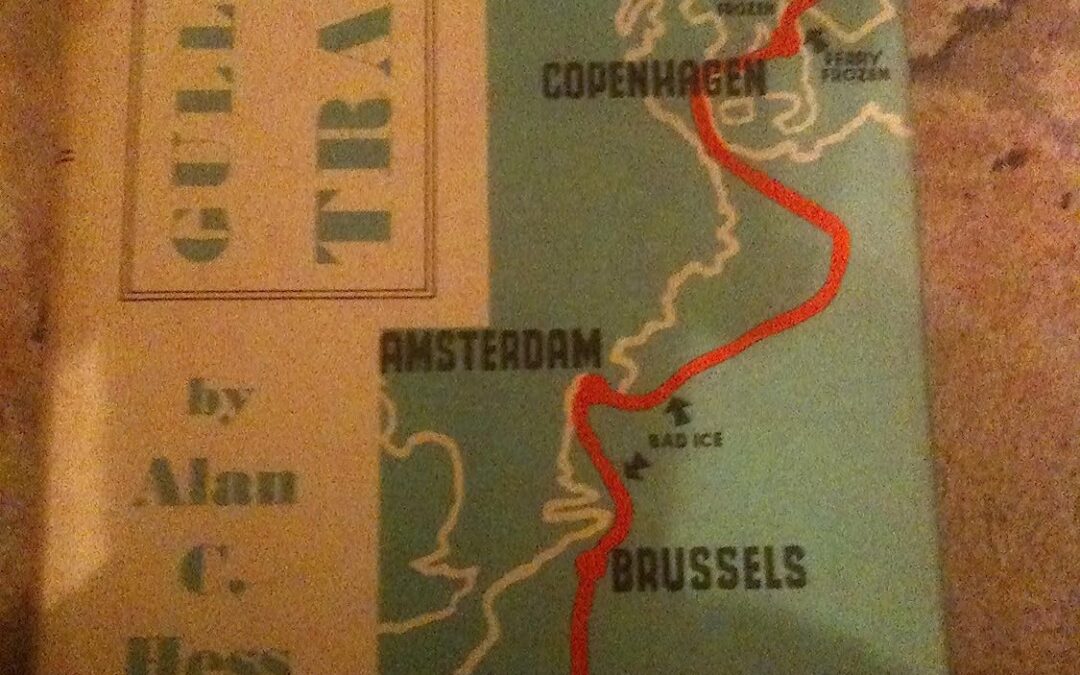
A reprint of the 1948 original by Alan Hess about the 1947 Austin Goodwill Tour of Europe, plus how I found, restored and repeated their adventure, starting exactly 90 years to the minute from the same corner of the same square in Oslo. 7 Capital Cities in 7 days – Oslo, Stockholm, Copenhagen, Amsterdam, Brussells, Paris and Berne – then to Geneva.

A sports car for race tracks and everyday life: This holds true since the 1984 triumph of legendary four-by-four 911 at the Paris-Dakar rally, the world’s toughest long-distance race. The now re-issued off-road Porsche manages the balancing act of road/sports car and cross-country vehicle better than any other 911 before. In eight chapters the richly illustrated car book depicts the development of the first genuine off-road 911. From the historic genes at the Porsche development center in Weissach to the extensive test drives of the sports car on various continents – a piece of living automobile history.
- Ideal gift for car lovers: High-quality illustrated book on the Porsche 911 Dakar
- Exclusive photos by Porsche photographer Christoph Bauer
- For off-road and motorsport fans: Glimpses behind the scene of vehicle development
- History of the Porsche 911 Dakar: From the first idea to the test drives
- Official Porsche book from the Christophorus edition
Impressive pictures document the development of this special 911 model, limited to 2,500 cars. Christoph Bauer, long-standing Porsche photographer, took the brilliant photos for this volume. Bauer followed the whole process of development – all the time close to the designers. Thus he was able to take spectacular Porsche photos, just for this illustrated car book. Pure Porsche design!
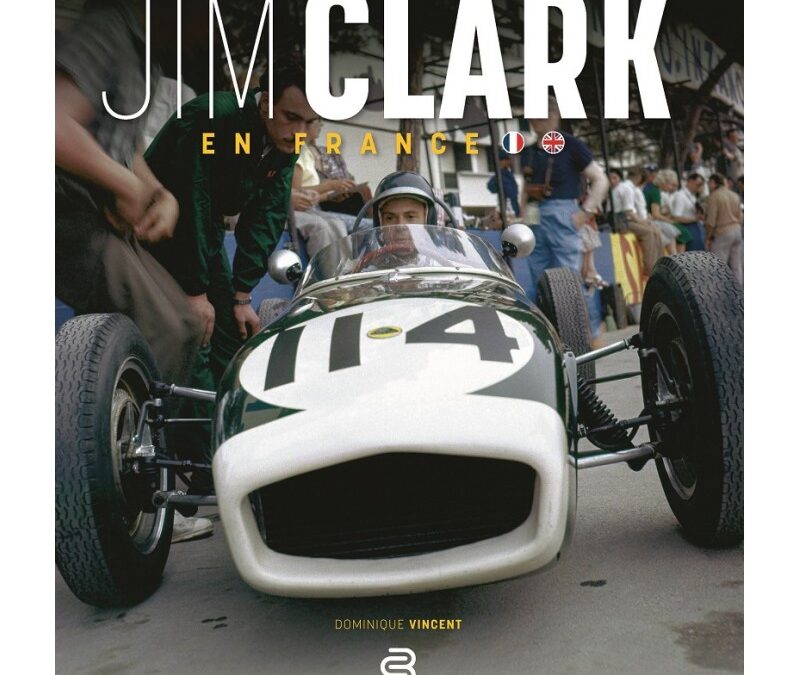
Jim Clark. A name that suggests a prince of speed with a dazzling smile. So much has already been said or written about this extraordinary Scottish champion, whom many consider to be one of the greatest in the history of his sport: His natural elegance, his surgically precise aerial driving, his behaviour as incisive on the track as it is discreet off it, his loyalty and simplicity in his relationships with others, the symbiotic couple he formed with Colin Chapman – the brilliant Lotus creator – his tragic destiny …
However, if the international sporting career of the champion is well known, the French part, including his life in Paris, is probably less so.With the help of new testimonies from friends and family, exceptional and unpublished photos and documents (notably from the archives of Gérard Crombac, Michel Finquel and the Clark family), the author has been able to shed light on the French and Monegasque dimension – 41 races in F1, F2, FJ, Sport and GT from 1959 to 1967 – of Jim Clark’s unparalleled trajectory.
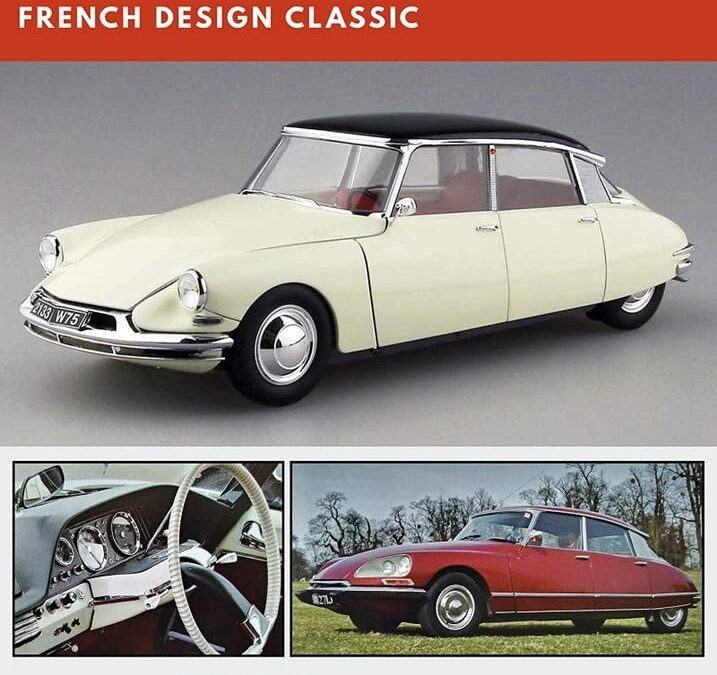
Launched in 1955 yet looking like a sci-fi design proposal for a future then undreamed of, Flaminio Bertoni’s ellipsoid sculpture with wheels that was the Citroën DS stunned the world.
There was a near riot at the 1955 Paris Motor Show launch of the car, orders flooded in for this, the new ‘big Citroën’ (a Voiture a Grande Diffusion or VGD) as the car that replaced the legendary Traction Avant range.
The term ‘DS’ stems from two Citroën parts of nomenclature – the type of engine used as the 11D, (D) and the special hemispherical design of the cylinder head as ‘Culasse Special’ (S): DS out of ‘Deesse’ or Goddess, was a more popular myth of ‘ DS’ origination, but an erroneous one.
But it was not just the car’s aerodynamically advanced body shape (Cd. 0.37) that framed the genius of the DS: hydro pneumatic self-levelling suspension, advanced plastics and synthetics for the construction of the roof and dashboard/fascia, and amazing road holding and cabin comfort were some of this car’s highlights.
Only the lack of an advanced new engine was deemed a missed opportunity. In fact Citroën had created a new engine for the car but lacked the resources to produce it in time for 1955.
DS was a major moment in the history of car design, one so advanced that it would take other auto manufacturers years to embrace. Yet DS in its ‘aero’ design was the precursor to today’s low drag cars of curved form.
Manufactured worldwide, used by presidents, leaders, diplomats, farmers and many types of people, the DS redefined Citroën, its engineering and design language, and its brand, for decades to come.
Prone to rust, not the safest car in the world, and always lacking a smoother powerplant, the DS still became an icon of car design.
Reshaped with a new nose and faired-in headlamps in 1967, DS remained in production until 1975.
Across its life DS spawned an estate car variant as the ‘Safari’, a range of limousines, two-door convertibles, and even coach-built coupes and rally specials.
This car was a product design that became an article of social science – it was that famous and it defined a European design movement upon a global stage then packed with ‘me too’ copyist designs.
The DS or ‘Goddess’ as it was tagged, was a tear-drop shaped act of French confidence in a world of the regurgitation of the known. Some argue that DS and its effect has never been surpassed.
This new value-for-money book provides innovative access to the design, history, and modeling of the revolutionary DS – one of the true ‘greats’ of motoring history and, a contemporary classic car of huge popularity.
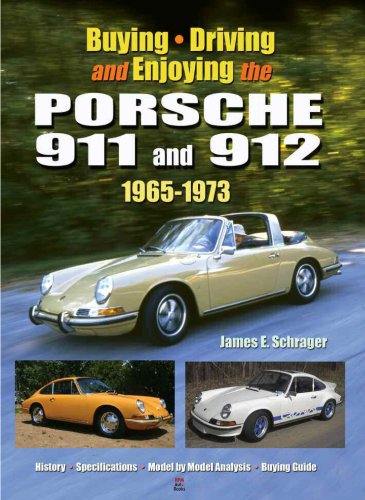
A comprehensive, all-color overview of the first 911 series from Porsche, written by an expert. History, technical and market details, covering all models from the first 911s and 912s to the 1973 Carrera RS. In-depth information about body styles, engines, transmissions, equipment, trim, wheels, interiors, all illustrated in color. New torque charts clearly compare each car’s performance and an exhaustively researched chassis/engine/transmission chart is included. 1970 Factory tour photos open each chapter. Detailed descriptions with specifications and comparisons of each year and model, along with accurate and authoritative assessments give the Porsche enthusiast a complete insider s look at these timelessly popular sports cars.
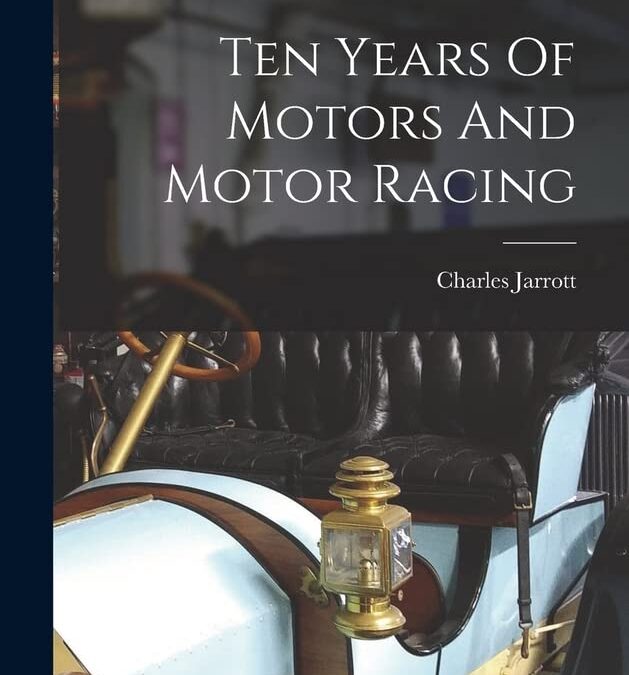
A rare and extremely important early motor racing book by the Englishman, Charles Jarrott, who was a very successful competitor in many of the major early international racing events in Great Britain and Europe from 1895-1906. The book has many black ad white photos and illustrations and a wonderful appendix that identifies the winners of each of the early competitions from 1895-1906, (by date, vehicle and race)! This is the personal story of a man who participated in the earliest days of motoring and the first international motor races including the: – the famous city-to-city races ( 1901 Paris-Berlin, 1902 Circuit Du Nord, 1902 Paris-Vienna, 1902 Circuit Des Ardennes, etc.), – and Gordon Bennett Cup events (1900-1904). The first English Edition was published in 1906 by E. Grant Richards in London.
This edition is a modern re-print.
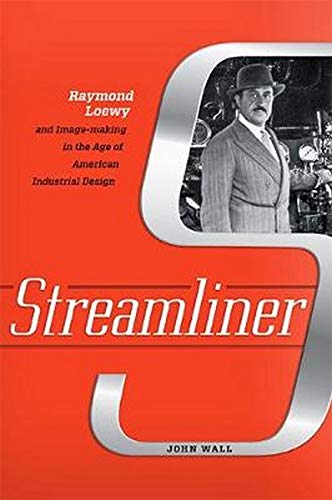
The true story of Raymond Loewy, whose designs are still celebrated for their unerring ability to advance American consumer taste.
Born in Paris in 1893 and trained as an engineer, Raymond Loewy revolutionized twentieth-century American industrial design. Combining salesmanship and media savvy, he created bright, smooth, and colorful logos for major corporations that included Greyhound, Exxon, and Nabisco. His designs for Studebaker automobiles, Sears Coldspot refrigerators, Lucky Strike cigarette packs, and Pennsylvania Railroad locomotives are iconic. Beyond his timeless designs, Loewy carefully built an international reputation through the assiduous courting of journalists and tastemakers to become the face of both a new profession and a consumer-driven vision of the American dream.
In Streamliner, John Wall traces the evolution of an industry through the lens of Loewy’s eclectic life, distinctive work, and invented persona. How, he asks, did Loewy build a business while transforming himself into a national brand a half century before “branding” became relevant? Placing Loewy in context with the emerging consumer culture of the latter half of the twentieth century, Wall explores how his approach to business complemented―or differed from―that of his well-known contemporaries, including industrial designers Henry Dreyfuss, Walter Teague, and Norman Bel Geddes. Wall also reveals how Loewy tailored his lifestyle to cement the image of “designer” in the public imagination and why the self-promotion that drove Loewy to the top of his profession began to work against him at the end of his career. Streamliner is an important and engaging work on one of the longest-lived careers in industrial design.

Hispano Suiza, a firm of sound Spanish tradition and origins, is little known to the new generations today. Great luxury automobiles made at the Hispano Suiza factories in Barcelona and Paris during the 1920s and 1930s are usually brought to mind to those who have heard of the company. However, Hispano Suiza developed other activities of considerable industrial, commercial, and strategic importance – aviation engines produced in Spain and France, and aircraft constructed only in Spain.
In 1923, Hispano Suiza established the Société Française Hispano Suiza in France. Although the highest percentage of the company’s assets was Spanish, Hispano Suiza became the first company in France to manufacture aviation engines and the main supplier for the Armée de l’Air until the 1960s.
This book examines Hispano Suiza’s evolution and the technological advances of its engines. Starting with circumstances that favored the creation of an indigenous aviation engine, the story follows engine development for a breadth of applications, particularly aviation engines, and describes, in parallel, the birth and development of aircraft in Spain by Campañía Española de Construcciones Aeronáuticas (CECA), La Hispano, La Hispano Aircraft, La Hispano Suiza, SAF-5, SAF-15, and La Hispano Aviación.
Although numerous books have been published on the more common developments of Hispano Suiza, until now none have been published on the company’s primary line of business, aircraft and aviation engines. Hispano Suiza in Aeronautics: Men, Companies, Engines and Aircraft is an in-depth study covering a vast period in the history of the Spanish and French aircraft industry (1913-1967) and offers insight into Hispano Suiza’s significant developments.
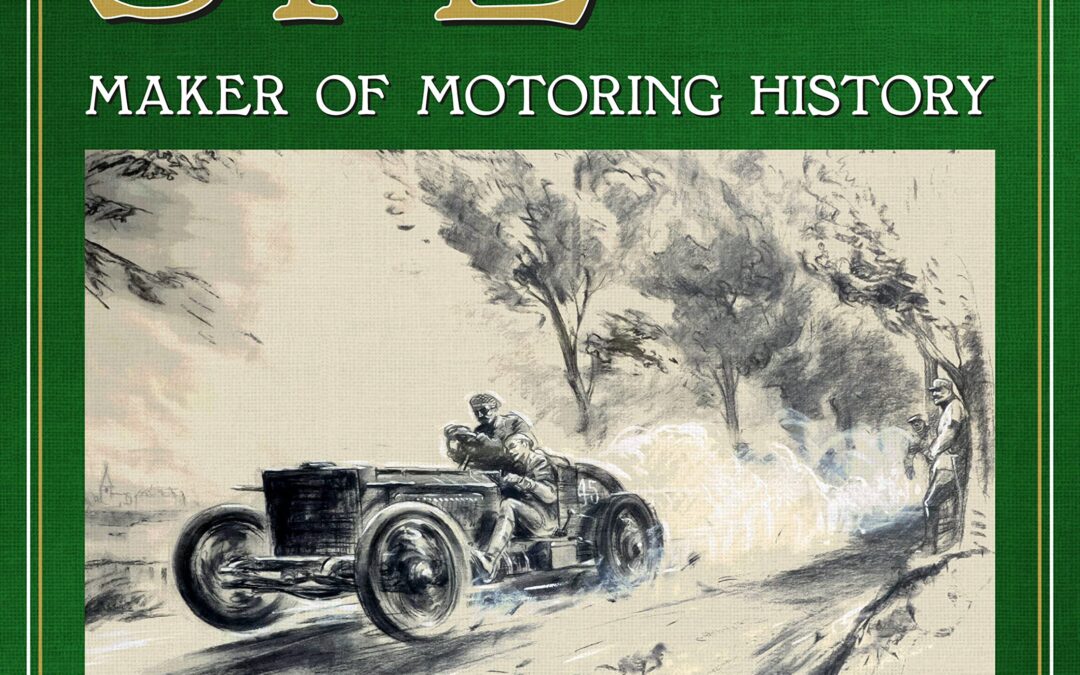
Selwyn Francis Edge, invariably known simply as ‘SF’, was a highly significant pioneer of motoring in Britain. When, in 1902, he drove a Napier to victory in the Gordon Bennett Cup, a mighty event on public roads between Paris in France and Innsbruck in Austria, he initiated serious British endeavour in motor racing.
He was deeply involved in the birth of Brooklands, setting a 24-hour solo driving record there when the circuit opened in 1907. As a towering industry figure most closely associated with Napier and AC Cars, he played an important role in the growth of car manufacture in Britain. In the words of ‘Bentley Boy’ S.C.H. ‘Sammy’ Davis, ‘His keen grey eyes, the bushy eyebrows and the hawk-like face… made him a notable figure in any assembly.’
- Dedicated cyclist: SF’s early interest in cycles led to racing achievement on two wheels and three, including setting records for round trips between London and Brighton, and taking
- Introducing the motor car to Britain: from his first driving experience, in 1897 with a De Dion-Bouton, SF quickly became an influential advocate of all things automotive in a country that initially lagged far behind France.
- Motor racing pioneer: after early competitions on motor tricycles, SF became a regular competitor in the heroic long-distance races of mainland Europe, famously winning the 1902 Gordon Bennett Cup in a Napier and becoming a national celebrity.
- Growth of Napier: with SF as a guiding force, this long-established engineering company evolved into the manufacturer of some of the finest cars of the Edwardian era.
- Brooklands: upon the circuit’s opening in 1907, SF drove a Napier solo for 24 hours at an average speed of just over 65mph, establishing a record that stood for 18 years.
- AC Cars: after the First World War, SF helped to develop AC Cars into an important manufacturer of sporting cars, with more attempts at speed records along the way.
This biography uncovers the life of an extraordinary man whose achievements deserve to be far more widely recognised.
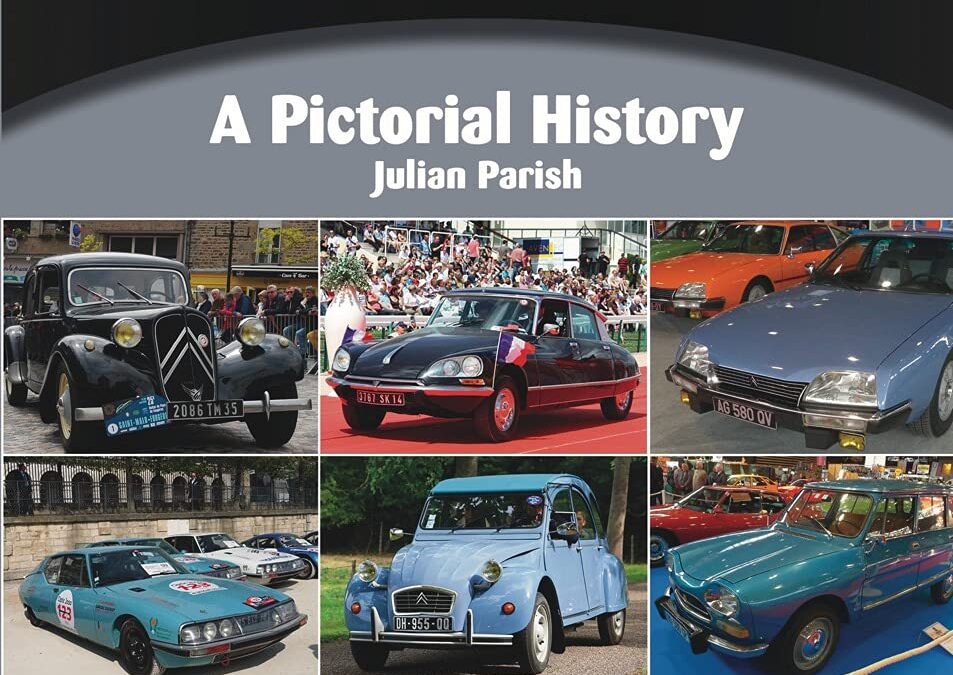
Of all the French car manufacturers, Citroën has the most enthusiastic following. During the half-century covered by this book, it produced the most technologically advanced cars of the time, including the Traction Avant, 2CV, DS and SM. This handy full-colour guide has individual chapters devoted to each of these models, together with the Ami, GS, CX, BX and the first models produced under Peugeot’s ownership. UK-built models and car-derived vans are included. Each chapter provides an introduction to the design and evolution of each model, as well as detailed technical information. Production numbers and dates are given, and there are details of special coachbuilt versions and limited editions. The guide is illustrated in full colour, with recent and archive photographs. Dashboard instrument layouts and gearchange patterns are also shown. Julian Parish is an experienced professional author and translator who has written on many makes of car, but his first car was a Citroën Dyane. He has lived in France for 25 years and has followed the marque at car shows and museums throughout the country.
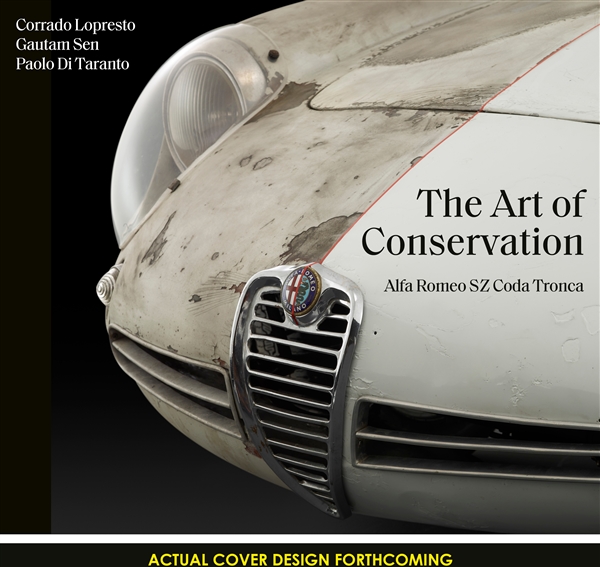
Pre-order now for early 2023 delivery
The story of rediscovering a very important historic vehicle and its conservation whereby the car has been treated as a work of art, saving as much as possible of the amazingly well preserved original. Drawing on art and archaeological techniques, prominent Italian collector Corrado Lopresto decided to clean only half the car, leaving the other half frozen in time. In the uncleaned half, Lopresto preserved everything (including the dust) under a thin layer of transparent matt lacquer. The cleaned part has not been restored either, but has been saved by retouching in such a way that the original aspects are not affected. This book “Alfa Romeo SZ Coda Tronca: The Art of Conservation” captures the rediscovery of this historic vehicle and the way it has been preserved – a fascinating tale of art meeting automobile. A very significant car in terms of aerodynamics and body design, this is the specific car on which the evolution from the Coda Tonda version of the Alfa Romeo Giulietta SZ to the Coda Tronca was executed
- Hidden for the best part of five decades, the car was rediscovered in the United States in a perfectly preserved state
- Acquired by the legendary Italian collector Corrado Lopresto, one half of the car has been conserved, and the other half has received light restoration to preserve the car in as original a state as possible, making it a unique experiment and example of conservation processes and concepts
- Not only did it win the Best Preserved Award at the Concorso Eleganza Villa d’Este in 2016, it also headlined the special exhibition of historic vehicles at UNESCO, Paris
- No doubt one of the most significant cases of a barn find, which has been preserved in the best possible way, thereby providing an example for the future
- Hard cover with dust jacket



